Quick review
The good
The not-so-good
Bose revives and reinvigorates its flagship headphones, as the QuietComfort Ultra brings the best in just about everything to either phone, iOS and Android.
One of the pioneers of noise cancellation technology is back for another round, as Bose returns with a pair of something to take on the competition.
The audio engineers at Bose practically invented the category of noise cancellation, and for years were basically left unchallenged in providing the best noise cancelling headphones around.
All of that changed in 2016, when Sony arrived on the scene with its own challenger, the MDR-1000X. Alongside that pair were others from other brands. Beats popped up, as did Sennheiser, and the ANC competition really started heating up.
It’s been six years of regular one-upmanship, as rivals delivered improvements to cancellation, better sound, and more comfortable designs, and in recent years, Bose hasn’t held the top spot in noise cancelling headphones, losing ground to the likes of Sony and Apple.
This year, however, all of that could change, as Bose has a pair that brings with it so much, it could just inch out the best from the other brands.
Are the Bose QuietComfort Ultra headphones the ultimate ANC headphones around?
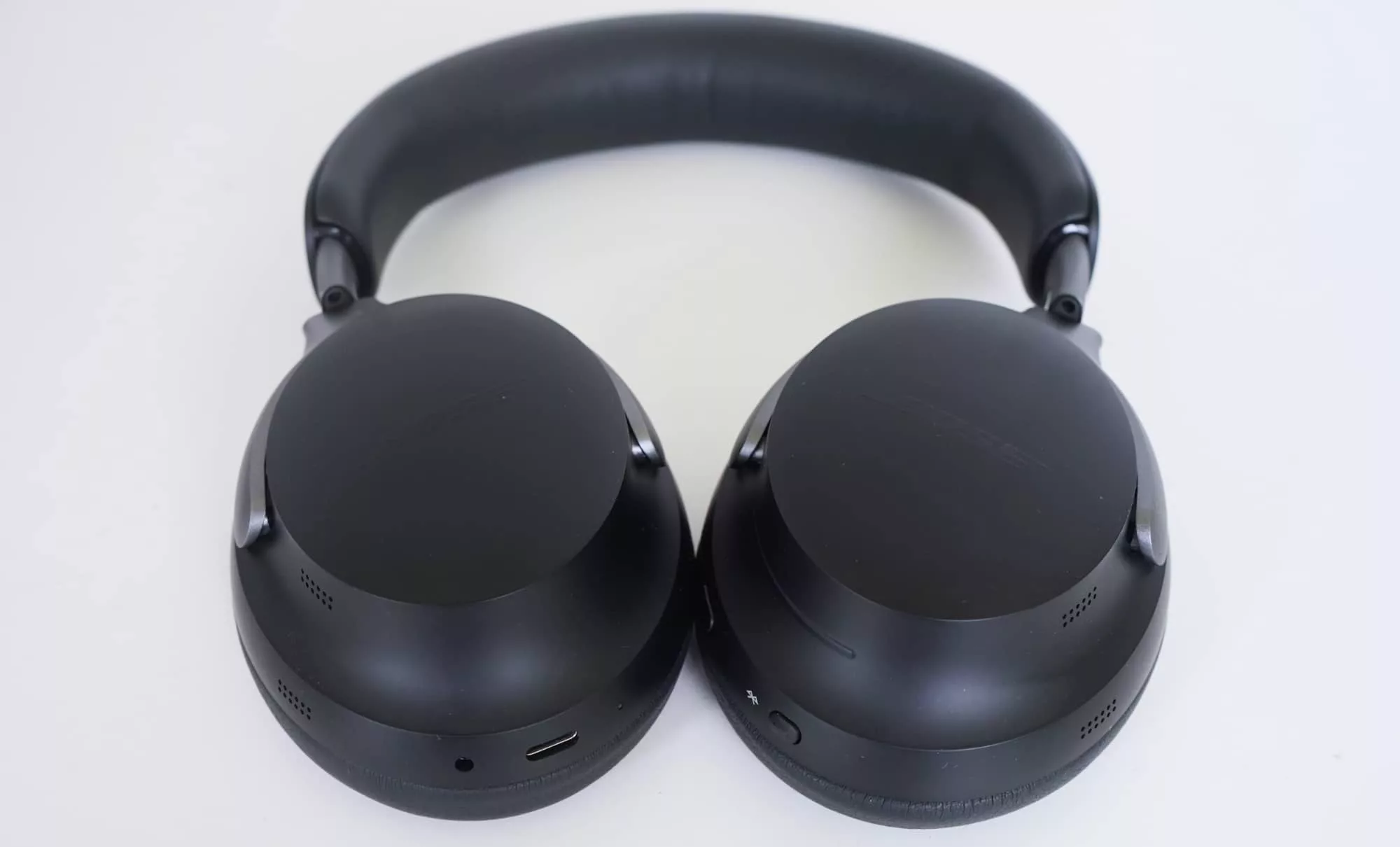
Design and features
Designed somewhere between the Bose QC 45 and the Noise Cancelling 700 headphones means you’ll get the sizeable pads from the former that have often been regarded as the comfiest headphones around, and a form-factor more like the NC 700 we saw a few years ago.
Truth be told, it has been some time since Bose redesigned its headphones properly.
The NC 700 delivered a different look for its flagship headphones, but the subsequent replacement in the QC 45 went back to the classic Quiet Comfort look. They looked so much like the QC 35, you mightn’t think anything at all changed.
In the QuietComfort Ultra, the look has very much been blended, with the sleek look of the NC 700 married to what people know from the standard QuietComfort models. It’s a style that’s easy on the eyes, but yet still totally familiar, and we dig it.
Inside there are 35mm drivers on either side, plus some processing hardware to deal with your sound and the feature set, which covers Bluetooth and immersive audio. Noise cancellation can be adjusted at various levels, and there’s an app from Bose to help you do that via Bose Music.
The headphones fold up, come in a case, and even support a hard-wired connection, though it uses Bose’s old trick of a 2.5mm to 3.5mm cable, which is included. We’re going to stop complaining about that because these days, it’s hardly worth it. At least it includes support for a wired connection, handy if you want to plug into a computer.
Most people will skip that, though, relying on the Bluetooth connection for the headphones, which looks like a blend of styles with quite clearly a blend of technology, too.

In-use
This blending of styles and tech isn’t just apparent in the look or feature set, but also in how you use them.
Like the NC 700, there’s a touchpad to dial volume higher and lower, found on the edge of the right earphone cup. There are also two buttons to trigger power, battery levels, cycle through modes, and control music playback. It’s a combination of control schemes that feels like it needs a touch more refinement, and isn’t quite as polished or thought about with the touch and swipe methods used in the QC Ultra Earbuds.
These work, sure, but the QC Ultra Earbuds deliver a better touch interface for sure.
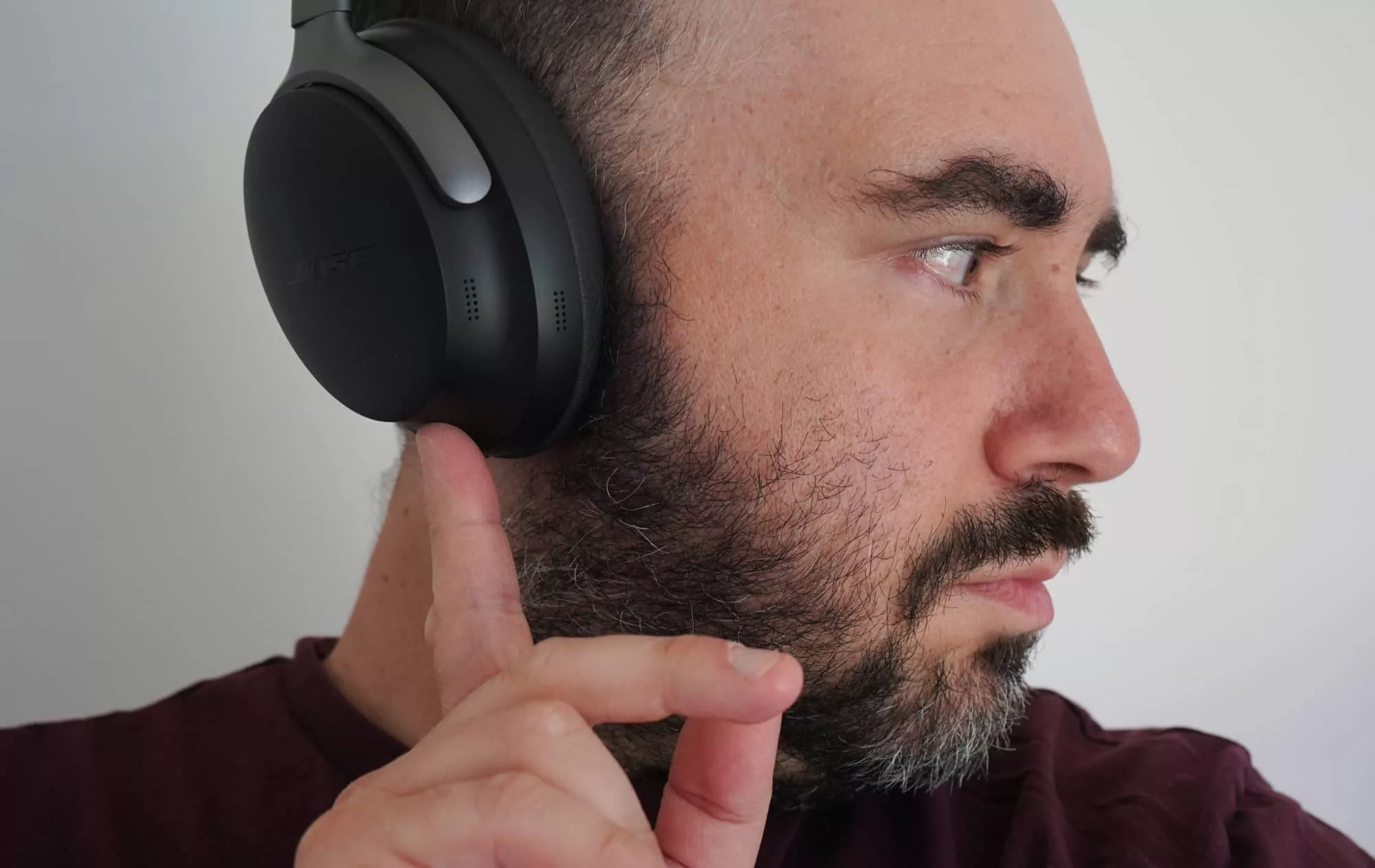
Fortunately, you can do most of what you need with the app, and the Bose Music app has improved steadily.
Oh, and you still get a case, making it easy to transport, though it has a moulded inside, so when you end up folding your headphones to collapse the size, they need to be folded a specific way to fit.
That’s less than desirable, but it does make for better protection, and frankly, we’re just happy Bose kept its foldable design as part of the package, especially when Sony got rid of the foldable design in the WH-1000XM5.

Performance
Clearly, the most important aspect with any pair of headphones is the performance, which we’re testing with the Pickr Sound Test. As usual, you can hear that playlist for yourself and try it with your headphones, and that starts with electronic, giving us a taste of what’s to come.
In the sweeping electronica scape offered by Tycho, we’re treated to a detailed soundscape with balanced delivery, while Daft Punk’s “Contact” offers up a good solid amount of punch while maintaining the balance. Detail is clear as is the balance.
It’s much the same in the pop of Carly Rae Jepson and Mark Ronson, rewarding ears with great sound and a wide soundstage, while the old school sounds of Marvin Gaye, David Bowie, and The Beatles delivered the comfortable lows and mids the original records are meant to hit with.
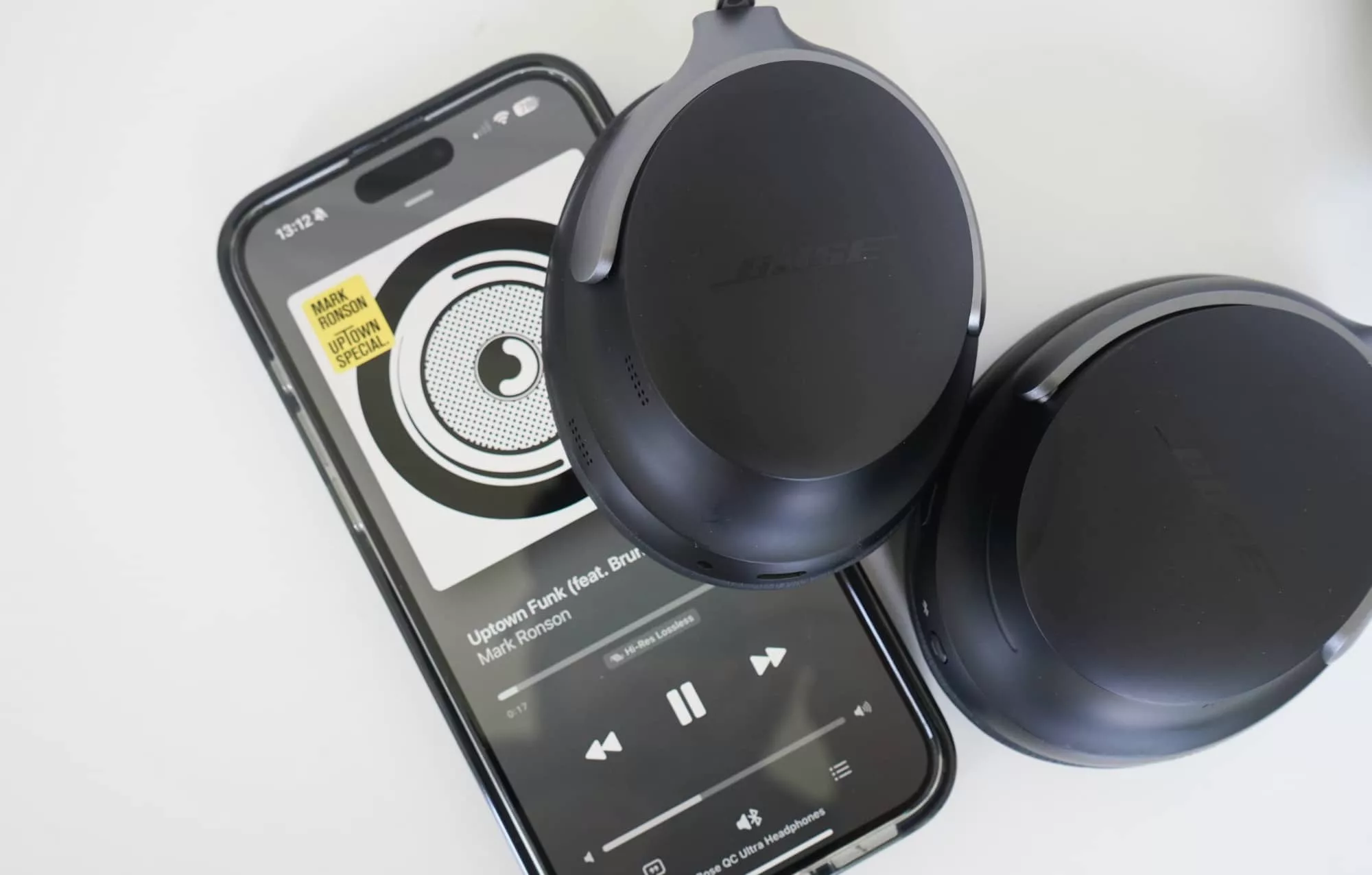
In fact, no matter what you tune in with — rock, jazz, classical, and so on — the sound through the QuietComfort Ultra is exceptional. At one point when we stepped outside the test playlist and jammed into some hard rock, the headphones continued on nailing it.
We didn’t feel the QuietComfort Ultra were as warm as say Sony’s WH-1000XM5, offering a more balanced profile, though the delivery is spot on every time.
This is music in about just the most balanced way as you’d want. It’s Bose doing what Bose does best: delivering a balanced sound deserving of the Bose name.
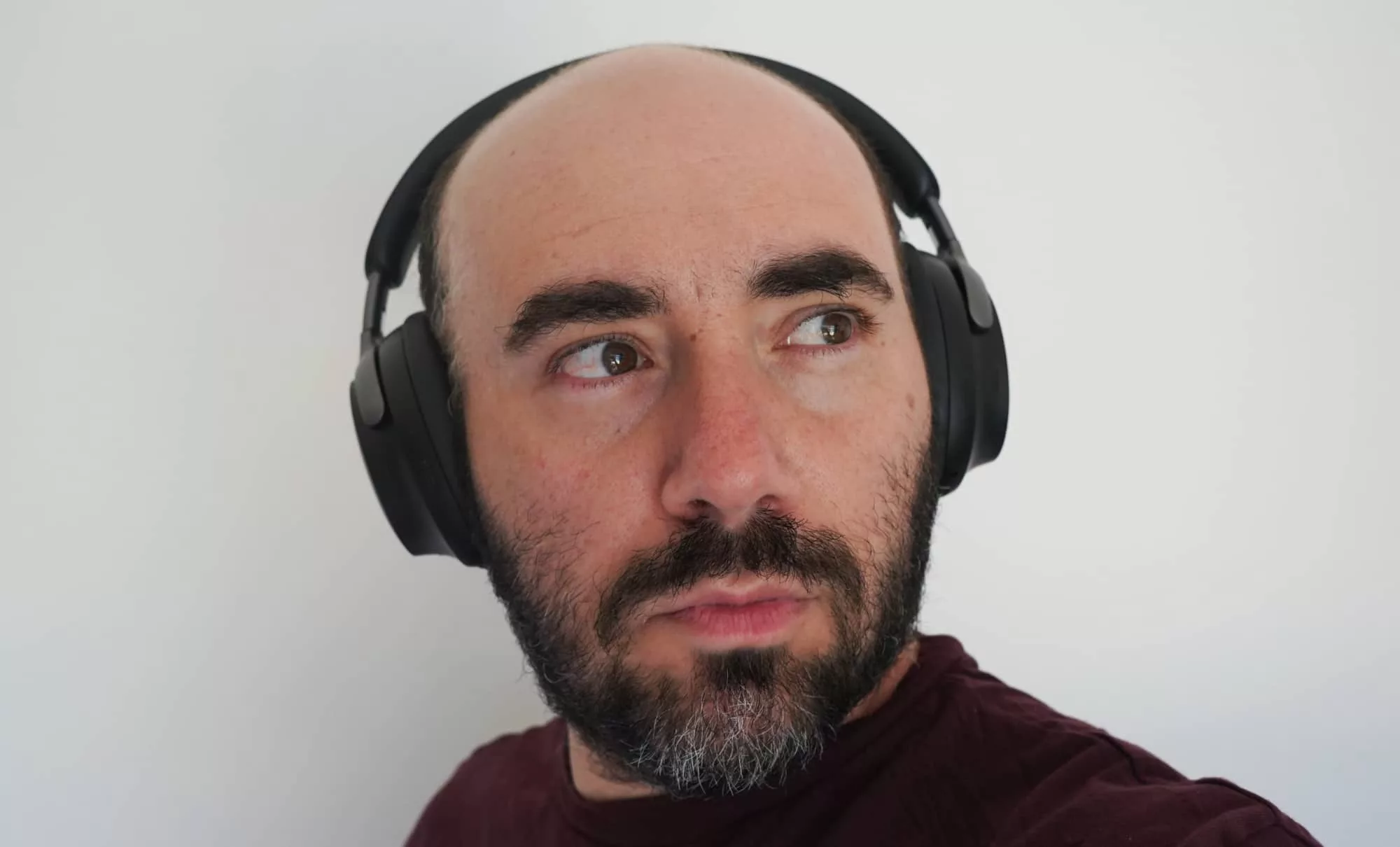
Noise cancellation
Throughout all of this listening, you’ll be treated to one of the best active noise cancellation systems around.
Granted, it doesn’t appear to be adaptive in quite the way you might want, and doesn’t change its cancellation mode based on GPS settings or even what it hears. Rather, Bose is giving you the control, mapping the ANC level to your desired sound mode.
In its highest level, active noise cancellation on the QC Ultra Headphones does a tremendous job, forcing repeatable sounds not to the periphery, but to the edge of non-existence. The whirr of the train engine and the roar of human traffic didn’t just get quelled as we walked around, but disappeared entirely, replaced by our music that we jammed along with.
You still get voices coming in, and there’s only so much active noise cancellation can block, but Bose does a brilliant job of pushing back and knocking out the outside world, giving you a bubble of brilliance.
The cancellation here is so good, working with a combination of intelligence, processing, and big and comfy pads that isolate and separate your ears from the world.
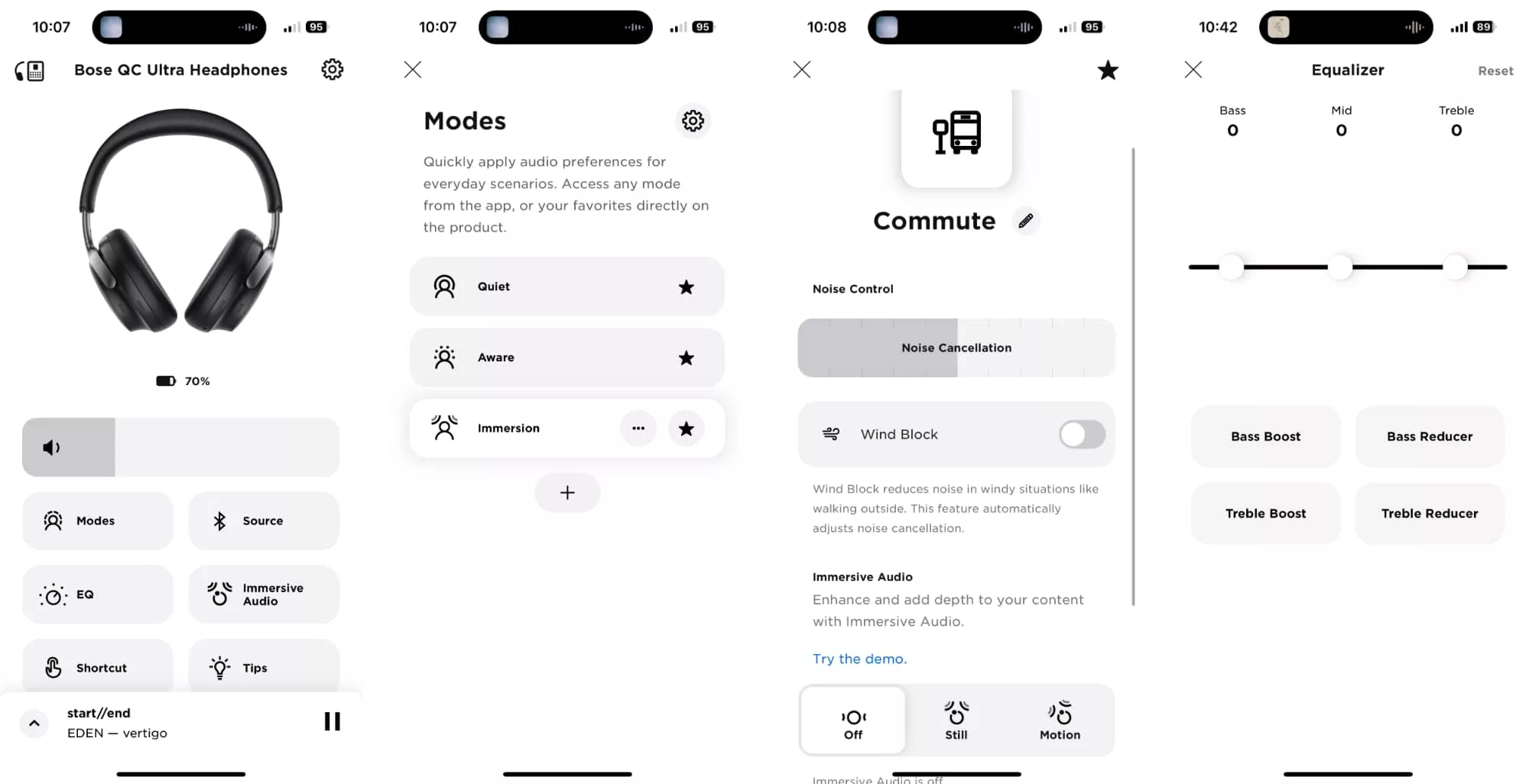
Spatial audio performance
One of the key parts that makes the Bose Quiet Comfort Ultra headphones so different from their regular QC headphone siblings is the inclusion of the Spatial Audio, a technology Bose has been dabbling with in a way that doesn’t require a subscription to Apple Music and its Dolby Atmos delivery system.
That’s good for a few reasons, including that lots of people rely on other music services (such as Spotify and YouTube Music) and they won’t be forced to miss out on head-tracked spatial, and because Apple’s implementation of head-tracked Dolby Atmos is such that it requires earphones and headphones made by Apple as well as an iPhone.
On the other hand, Bose’s spatial delivery system requires neither. It’s built into the headphones, works on any music service, and works on any platform. You don’t need to have an iPhone, because it works on Android, too! And you don’t need to subscribe to Apple Music, because it works on Spotify and YouTube Music.
Testing the Bose QC Ultra headphones, we’ve been able to prove just that, with Spotify’s auto DJ even sounding dimensional when the tech was working.
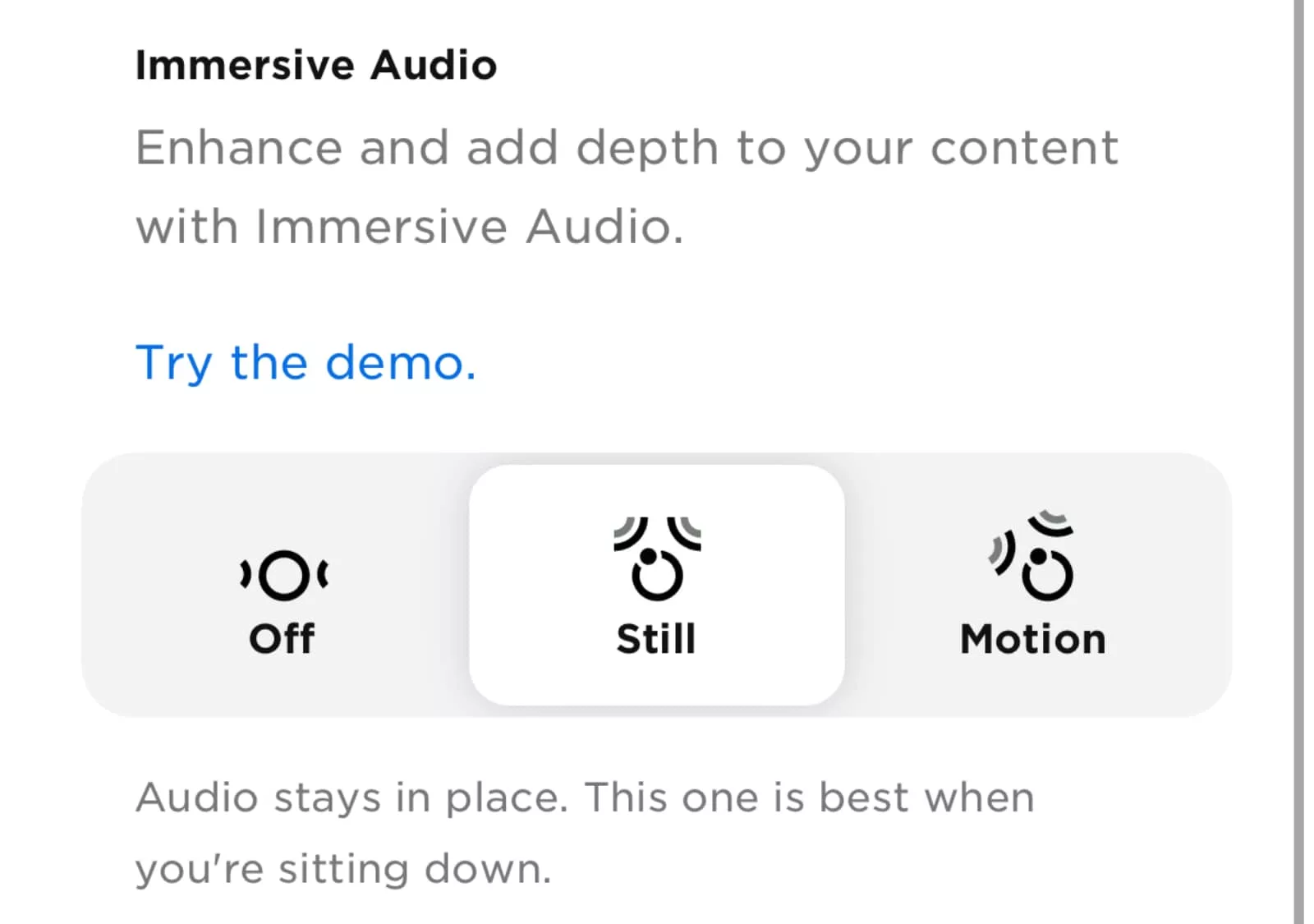
There are two settings to work with, offering a “still” setting which is more just about reorienting your head between the left and right channel split, and a “motion” setting which does that but also works to understand the direction of your body. A more logical way of thinking about which one to use is to try “still” when you’re seated and “motion” when you’re walking.
Ultimately, you can map either immersive audio setting to a mode alongside a noise cancellation setting, and then cycle through to what you want. In our tests, our “quiet” mode had spatial switched off while “immersive” had spatial set to motion.
And the result was exactly as we’d experienced in the QC Ultra Earbuds, delivering immersive sound that moved with us regardless of the phone and music service we used. Sure, you’re not actually getting a real Dolby Atmos soundtrack, and are more just moving between channels, but we don’t think anyone will care.
The Bose QC Ultra Headphones are delivering the spatial experience in a pair of comfy cans that anyone can experience. Android, iPhone, Spotify, Apple Music, whatever. It’s all good. In fact, it’s all great.
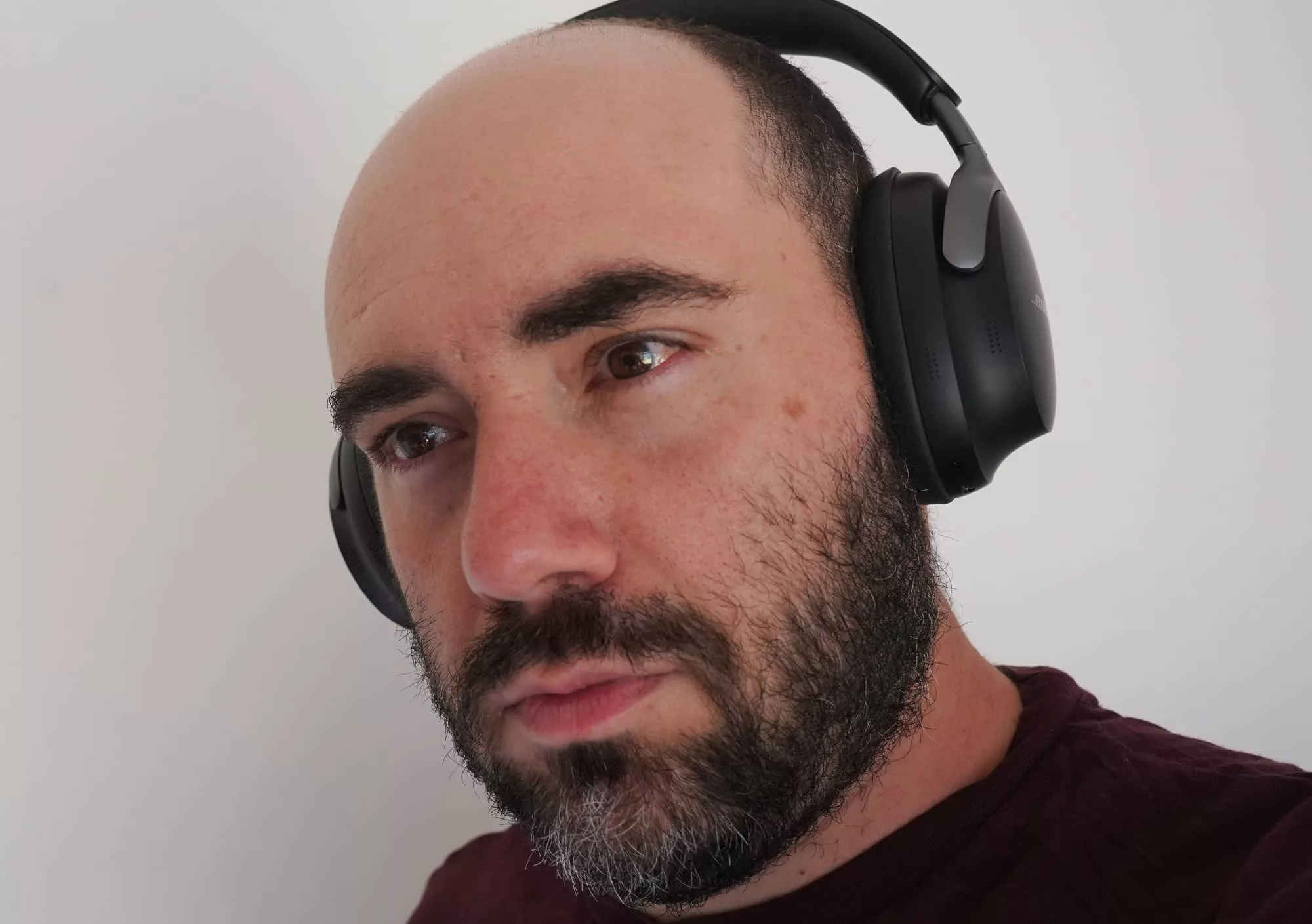
Battery
There’s a sizeable battery inside, too, offering as much as 24 hours of full-strength noise cancellation, which should be plenty for a trip around the world. Take the headphones off at times and charge them up using the Type C port if your travel time manages to run for longer.
Your battery life will be different if you use the spatial immersive audio feature, though it can vary based on how often you use it. We jumped around a bit, switching between immersive and regular stereo, and keep in mind, there are also two immersive modes to choose from.
With these changes in mind, we found closer to 18 to 20 hours of battery life in our experience, so you are definitely shaving some time off if you decide to use immersive audio, even if your music playback experience can be more fun. Bose touts 18 hours with immersive audio, so given we found a little bit more as we jumped around, this makes sense.
Fortunately, deciding the mode you want to be in is as easy as opening the app, so you can quickly work it out and change things up.
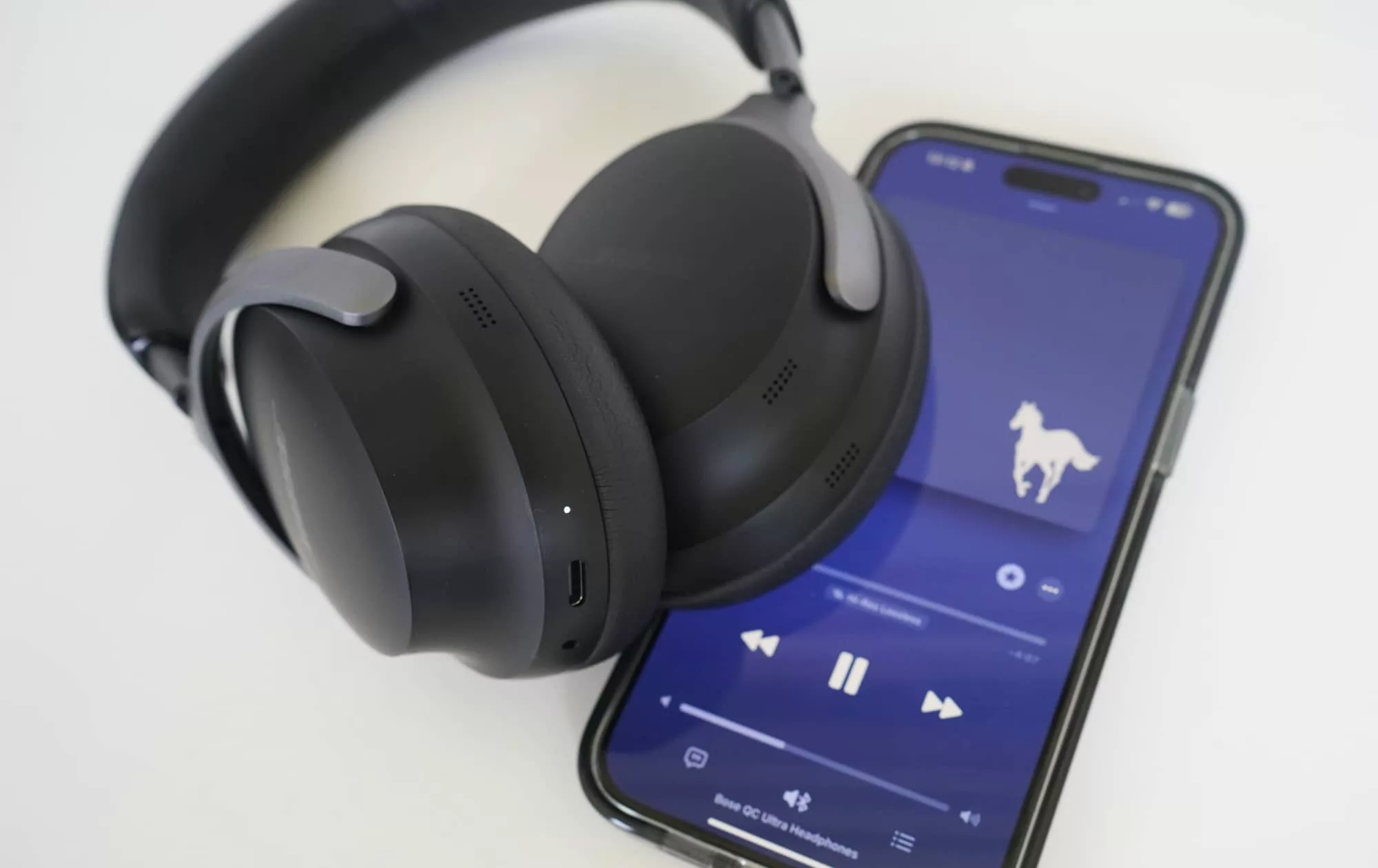
Value
Pricing for the QC Ultra Headphones sees Bose position these headphones in the high-end, carrying a $649 price in Australia which seems high up there, but isn’t out of kilter for what you can find about the place.
Yes, it’s on the other side of $500, while the QC Ultra Earbuds are under that mark at $449. There isn’t a major difference in feature set between the two, short of the obvious difference in form-factor and battery life, so you’re essentially weighing up whether you want to spend an extra $200 on a larger pair of headphones that does a more obvious job of isolating you from the world for longer.
In terms of value, $649 seems to be where most flagship noise cancelling headphones are sold these days, shortly before dropping in price. That’s where the Sony WH-1000XM5 launched at, but has subsequently dropped to $499 in the year since. You can find the Bose QC Ultra Headphones for around $549 if you look, so clearly there’s a bit of room to move on the price anyway.
We’d suggest looking around for a better deal, because while $649 is about normal for the cost of a great pair of brand new headphones, getting a better deal is always a good idea if you can.
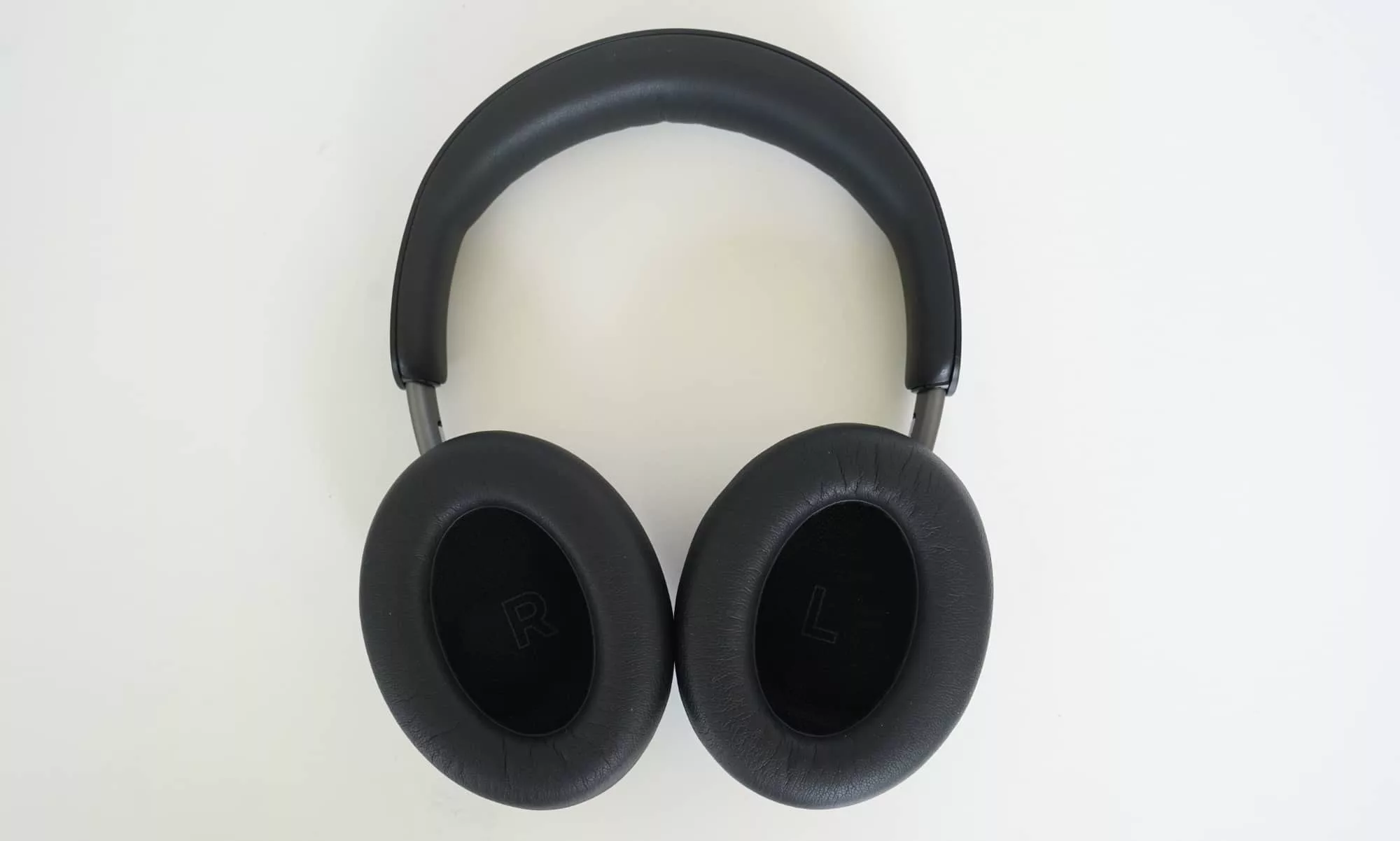
What needs work?
Mind you, the Bose QuietComfort Ultra Headphones deliver in such a way where the price may actually be worth what you’re getting.
Aside for the top notch sound and noise cancellation, Bose has delivered a pair that excels. These really are fantastic headphones. The QuietComfort Ultra puts Bose back in the top spot.
Despite that, there’s one thing we’re surprised didn’t make the cut: USB-C audio.
It’s one of those things that would have been nice to see, particularly as more expensive ANC headphones like the Focal Bathys seek to offer it, and even less flagship focused pairs from Beats get it in there, too.
In short, Bose is offering one of the best pairs of ANC headphones you can find, but it’s missing the sort of high-res feature some audiophiles might be craving, and that’s a real surprise.
Bose Quiet Comfort Ultra Headphones vs the competition
Bose has a reasonable amount of competition in this space, as well, competing against headphones from Apple, Beats, Sennheiser, and Sony, to name a few.
The benchmark winners of the category have been the more expensive Apple AirPods Max, which deliver a brilliant sound experience with head-tracked Dolby Atmos, but only if you happen to use both an iPhone and Apple Music, while Sony’s WH-1000XM5 remain one of the best options for cancellation and sound quality, and have been updated recently to support head-tracked spatial provided you use a service with the limited selection of Sony 360 Reality Audio.
Head-tracked spatial in full-size headphones is very much in a state of being supported by specific components, and if you don’t have the right combination, you won’t find it works. Beats has lessened the entry barrier this year with the totally fine Beats Studio Pro, but they also need Apple Music on an iPhone for the head-tracking. They work in just about every other way on Android, and even support an app for button customisation, but they’re not quite the AirPods Max. More the “almost AirPods Max”.
And meanwhile, there’s the Sennheiser Momentum 4, a great pair of noise cancelling headphones with a very comfortable design and a staggering battery life. You’ll miss out on head tracking, but will get a warm sound with a round-the-world level of battery life.
It’s somewhere in this chaotic list that Bose lists the QuietComfort Ultra, a pair of headphones that strives to solve the specificity of the head-tracking requirements, and yet deliver something for everyone.

Final thoughts (TLDR)
The goal of “something for everyone” seems to be something the Bose QuietComfort Ultra Headphones hits on the head beautifully. Somewhere deep in the Bose R&D office, a team of engineers is singing the words “nailed it” without any sense of irony, because they totally have.
Big, comfortable, and delivering one of the best sound and feature packages for any listener, the QuietComfort Ultra Headphones are winners through and through. Highly recommended.








